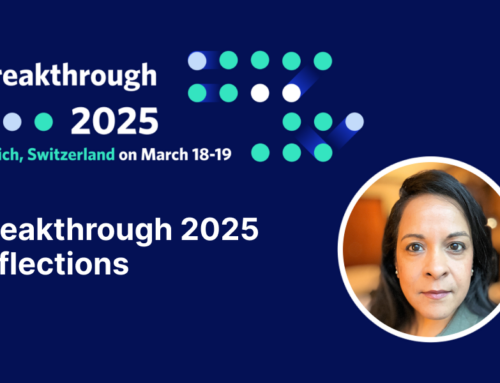There’s no doubt that the pharmaceutical industry is well into its ‘age of automation’. A 2021 Industry report found that 83% of life science organizations use some form of automation across their R&D processes—whether that be rule-based automation or technologies enabled by machine learning (ML), natural language processing (NLP), or artificial intelligence (AI). Now that automation is becoming an expected function of successful R&D strategies, organizations are tasked with finding the right method and level of automation to support their pharmacovigilance needs.
To implement a successful automation strategy, organizations should not only consider the intended benefits, but also the time and resources required to implement and maintain the system. Failing to do so can drive up your total cost of ownership or lead to issues such as incomplete data, lack of visibility to data, complex or inflexible workflows. When the right tools and automation workflows are in place, however, the burden of implementation is lowered, and automation becomes an approachable tool to empower the next generation of pharmacovigilance.
This article will define the concept of ‘approachable automation’ for drug safety platforms and share how they can transform pharmacovigilance into a strategic business function.
Understanding the Spectrum of Automation
Safety automation capabilities have expanded in recent decades with the introduction of smarter, more agile technology. When considering what capabilities would best benefit your pharmacovigilance efforts, it’s best to think of automation as a spectrum.
On one end of the spectrum are the structured, more repetitive tasks that rely on rule-based automation, such as automating duplicate data checks or establishing bulk case intake workflows. These often come pre-built in a safety system and can be configured to minimize the impact of human error on data entry and increase staff efficiency. Rule-based automation optimizes common workflows, leading to a reduced cost of case processing as well as improved data quality. It also frees up staff resources to focus on more high-value tasks like risk mitigation or maintaining global compliance.
Knowledge-assisted tasks – such as literature database screenings or causality assessments – require more mature forms of automation such as machine translation or natural language processing, that possess contextual intelligence. Organizations that need to process higher case volumes across larger global footprints benefit from knowledge-assisted automation because it scales to address increases in case volumes and can better handle structured or unstructured case sources.
Finally, knowledge-based automation refers to mature cognitive systems such as AI, machine learning, or natural language generation. These automation tools are powerful for digesting large data sets and delineating them down into meaningful safety trends. Knowledge-based automation contains sophisticated algorithms that can perform tasks that typically require visual perception, cognitive reasoning, speech recognition, and decision-making. This intelligent automation is the most complex to implement in safety workflows, but it can unlock insights into data sets related to patient safety or compliance that would otherwise take a significant investment of time and manpower.
Knowing what level of automation best matches your safety needs can be challenging. This is where the concept of approachable automation becomes critical.
What is ‘Approachable Automation’?
With an ever-growing scope of automation workflows available across a multitude of drug safety platforms, how can organizations determine the level of automation and correct platform for them?
The key is to focus on what makes automation approachable. Safety strategies are fluid and need to respond in real-time to changes in data volumes or new compliance regulations. Safety automation needs to mimic this fluidness and therefore requires a level of flexibility, functionality, and approachableness to support teams in all situations.
What are the signs of approachable automation?
- Interoperability — Your safety platform have seamless integration options with other life science systems for data sharing purposes and to create a consolidated, unified safety database.
- Production-Ready — Mature automation platforms that are pre-trained for pharmacovigilance result in out-of-the-box automation and faster validation of the automation.
- Ease of Implementation — Fewer staff resources are needed, and a lower cost of ownership is realized when automation is intuitive and easy to implement.
- Flexibility — Flexible automation workflows paired with standardized and ad hoc reporting options allow teams to remain agile and respond to changes in safety case management.
- Built in Safety Compliance — Keep up with local and global regulations with ease using automation platforms that come pre-built with compliance.
When automation is approachable, it unlocks efficiencies that cannot be matched using human-efforts or home-grown solutions.
Making Pharmacovigilance (PV) Automation Approachable
Where can pharmacovigilance and patient safety teams see the greatest value in implementing mature, approachable automation workflows?
Intake Automation — Remove the heavy manual and cost burden associated with uploading and validating bulk case series. Automate case intake from structured and unstructured sources – including email, paper, and call centers – across multiple languages using optical character recognition (OCR), robotic, and cognitive automation technologies. Generate receipts of adverse event data and reduce case processing times while being able to draw deep learning from incoming unstructured data sources.
Triage Automation — Case processing is traditionally a resource-intensive activity for the life sciences. Manage growing case volumes and increase efficiencies by up to 90% using intelligent triage automation. Natural language processing and machine learning allow case validity and triage to happen automatically by using an organization’s product dictionary to classify cases into initial, follow-up, and duplicate cases. With minimal intervention, empower touchless triage that codes drugs, determines case severity, tracks queries, and manages follow-up management from one, singular place.
Submissions and Reporting Automation — Reduce wasted time on manual workflows to enter and collect data, generate reports, and communicate results through automation. Integrate and aggregate global safety data into a singular dashboard for interactive data visualization that helps pharmacovigilance teams harness the power of safety insights. Automation creates a one-stop platform for forecasting and optimizing case processing workloads, generating ad hoc or automated report scheduling, and reducing safety update report preparation and submission times.
Compliance and Risk Management Automation — Reduce errors related to signal detection, evaluation, and tracking using smart automation that determines higher-quality signals and leverages safety signals for more effective risk mitigation. Aggregate internal and external data sources automatically for faster signal detection utilizing AI and automation workflows that also ensure built-in compliance with regulatory requirements.
Additional Workflow Automation — Drug safety platforms powered by approachable automation will have the ability to integrate and conduct data sharing to and from other systems via non-standard formats.
Achieve Approachable PV Automation
The benefits of approachable automation are still being realized as powerful tools become smarter and better equipped to manage the growing complexity of case management in life sciences. To achieve the promised benefits of automation, organizations should carefully plan, test, and validate their safety automation strategy using an approachable and proven solution for pharmacovigilance automation. Organizations should also identify internal metrics or KPIs to help them benchmark and improve their automation performance.
While it’s clear that automation is the way forward for Safety teams, choosing the right platform can be challenging. Look to invest in a next-generation safety platform that offers proven automation and has a proven track record of delivering pre-validated, end-to-end automation workflows.
As an industry, it’s time to make automation more than a buzzword. Talk to us to discover how to make automation approachable for your Safety team.




